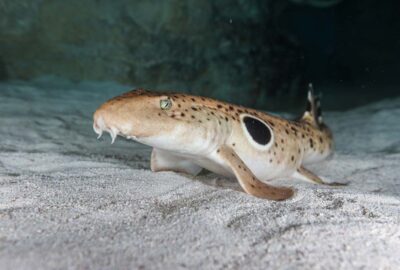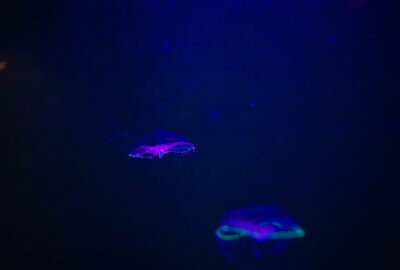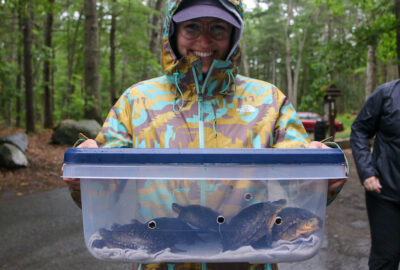How We Moved Six Cownose Rays to a New Aquarium
By New England Aquarium on Monday, January 23, 2023

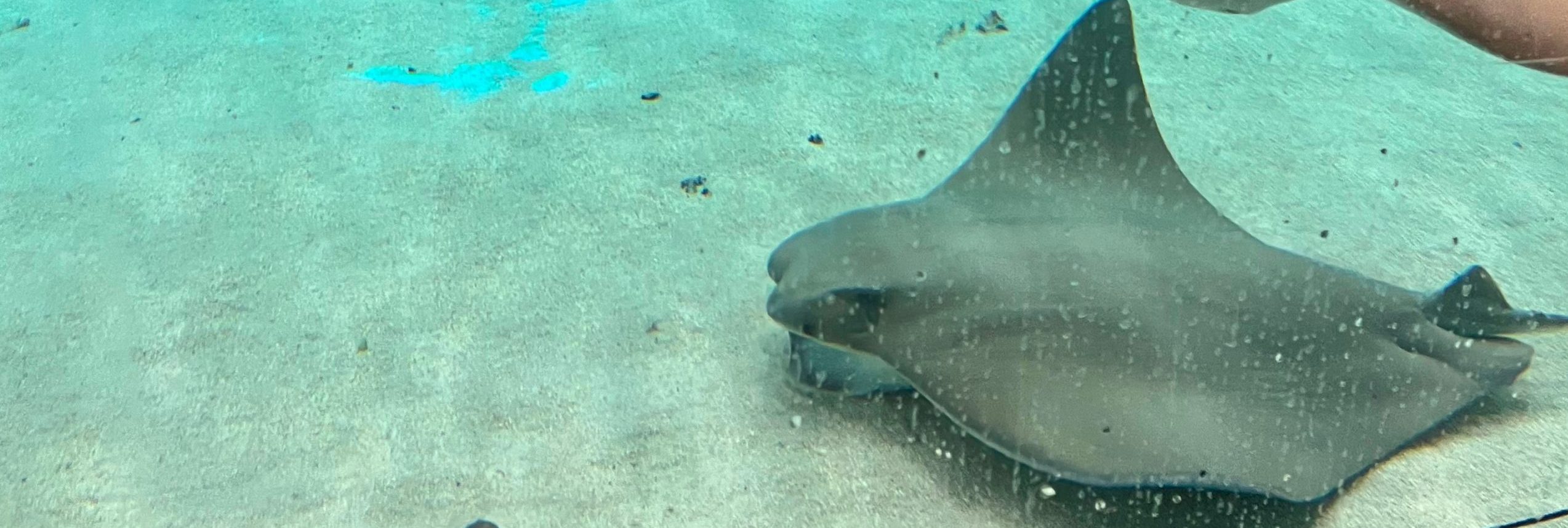
Cownose rays are just one of the species that visitors can meet up close at the Aquarium’s Trust Family Foundation Shark and Ray Touch Tank. While the rays in the exhibit seem pint-sized, cownose rays can grow up to five feet wide—which means that, for their well-being, we move them out of the exhibit once they exceed a certain size. But where do they go from there?
Recently, our team transported six cownose rays to Landry’s Aquarium in Nashville from our Quincy Animal Care Center, where they were living in a larger tank as the move was being planned. The 1,200-mile trip took weeks of careful planning upfront and a team of six aquarists doing the traveling—plus many more behind the scenes. To get to Tennessee from Massachusetts, the rays were only on the road for 24 hours—but the journey had the team spread out across the country for four-and-half days from start to end.
What made this transport different is that, unlike many other marine animals, the cownose rays can’t be safely shipped. “They’re too big, and they’re too active to go into a box,” said Manager Sarah Tempesta, who was part of the team that planned the trip. “That means we have to put them into a tank on a truck and drive them ourselves.”
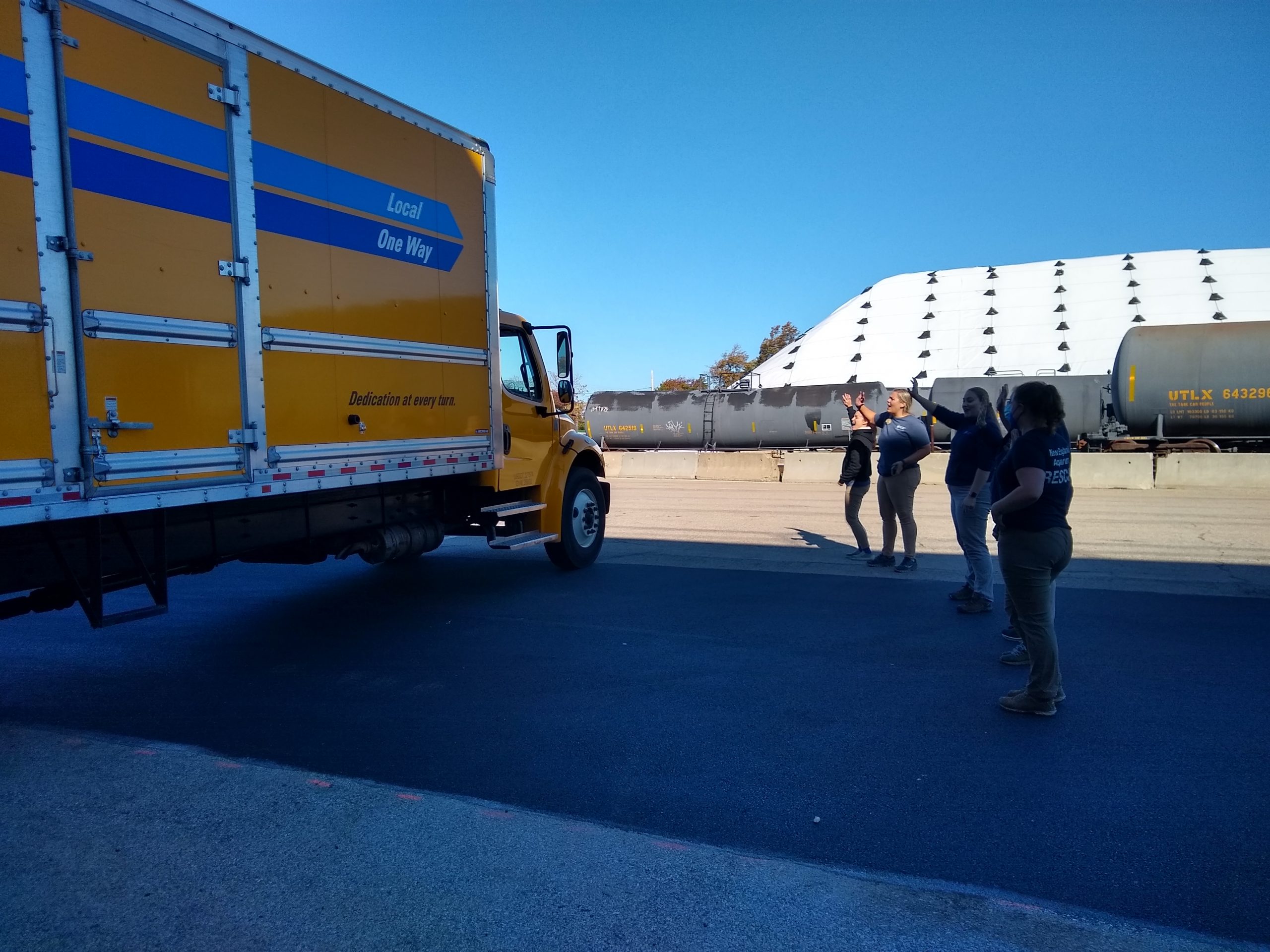
Making the trip
While the truck looked like a regular moving truck from the outside, inside it was anything but. A 1,000-gallon tank held the rays in the back of the truck, and the team set up special support systems throughout the cab to monitor and adjust water quality during the drive.
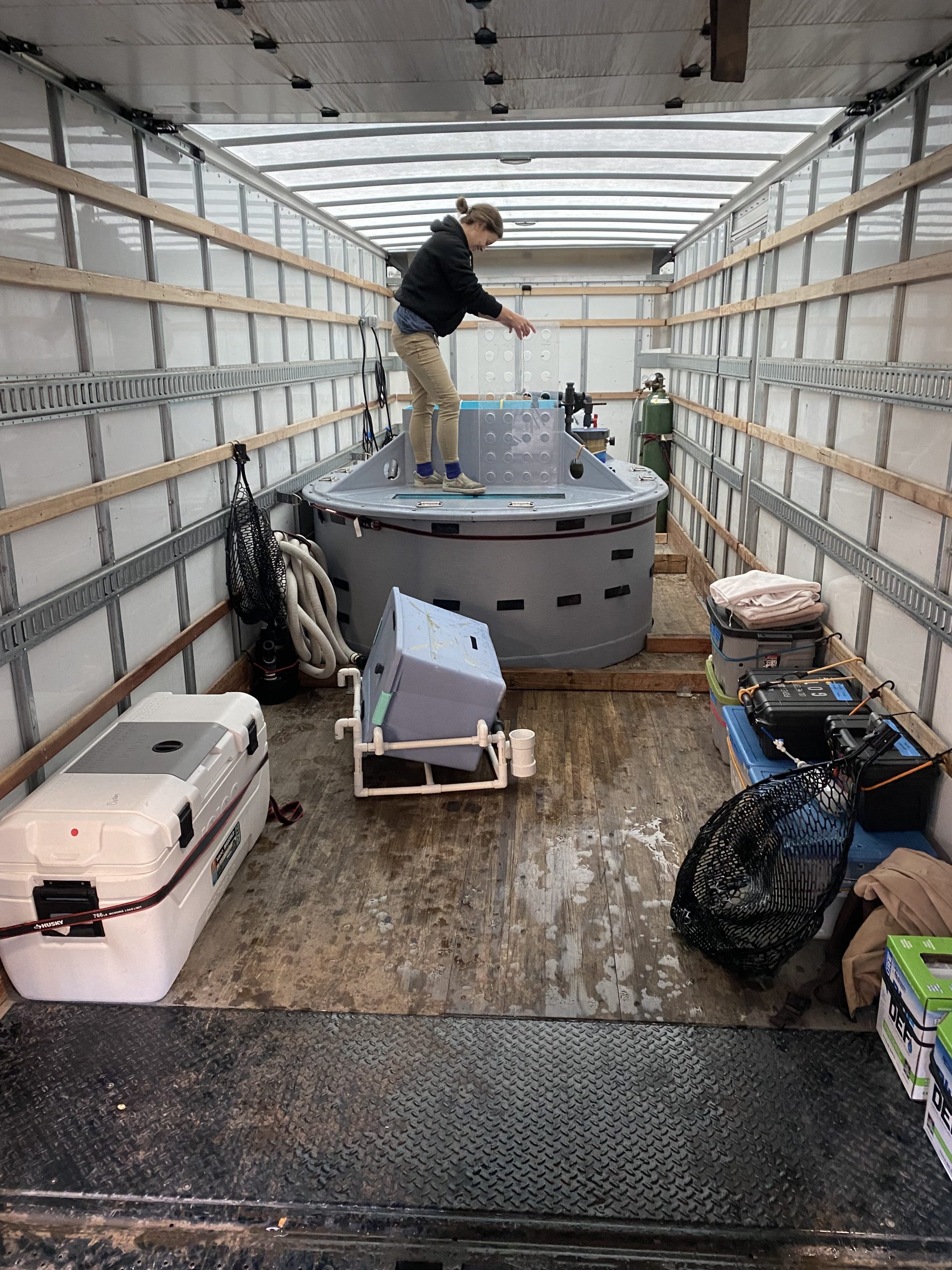
A pump in the tank circulated water through a biological filter, as well as up to the passenger seat for sampling.
The trip was split into three legs: Massachusetts to western New York, New York to Ohio, and Ohio to Tennessee. Senior Aquarist Rachel Moote traveled on the second section, driving out to New York to meet the the truck when it arrived. Senior Aquarist Audrey Santos, Manager Mike O’Neill, Manager Chris Doller, and Curator Barbara Bailey were the other team members who split up the three legs of driving. The route was carefully planned so the team could abide by Department of Transportation rules for truck drivers—no more than 11 hours of continuous driving and 10 hours off between driving shifts.
Rachel rode in the passenger seat, managing the water systems, as fellow Senior Aquarist Chris Bauernfeind drove. Water quality tests happened every 30 minutes along the road. “We would test the dissolved oxygen, the pH, the ammonia, and then we’d adjust [the water chemistry],” Rachel said. “It was a very bumpy vehicle, so there did end up being soda ash everywhere.”
But the systems in place ensured the team could keep a close eye on the rays throughout the trip; along with the water quality testing, a live camera feed meant the aquarists could check on their marine passengers without stopping the vehicle. “We make sure we have plenty of the chemicals we need for water quality,” said Sarah. They also packed extra parts for the tank setup, including plumbing and spare fuses and batteries. “Really, we have backup parts for everything,” she added.
Smooth delivery to a new home
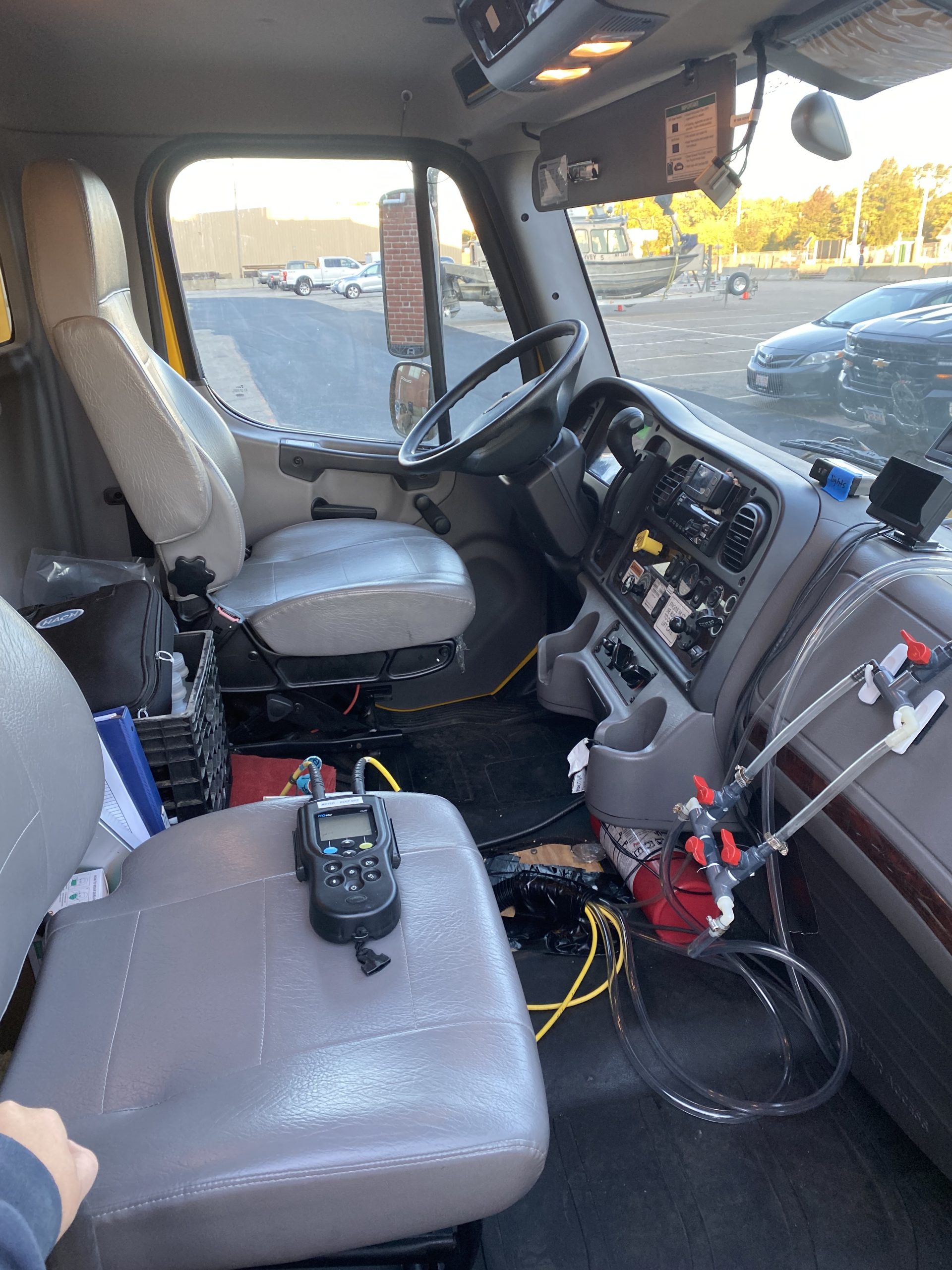
Luckily, the transport went well, thanks to the team’s careful planning. But, just in case, they contacted aquariums and zoos along the route ahead of time to ask about their capabilities for providing water changes, tanks, or storage for the rays in case of an emergency.
“We’ve learned a lot from previous transports, and we have small improvements for the next,” Rachel said. “If we kept the cab a little more organized, it would’ve been perfect,” she laughed.
Of course, the new home for the rays was chosen as carefully as the route. Association of Zoos and Aquariums (AZA)-accredited facilities are given first priority for animal transfers; institutions that are not AZA-accredited, like Landry’s Aquarium, go through a secondary screening process before being approved to receive animals. As part of that process, the team reviews the facility, and the receiving institution must fill out an application and provide references, Sarah said.
With a larger tank, Landry’s Aquarium can provide a more sustainable long-term home for the rays—a successful outcome after months of prep. “It was really smooth sailing,” Sarah said. “The best it could’ve been.”


